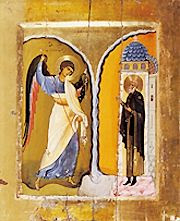Recently Dr. Bradley Nassif wrote an article entitled “The Calling of a Bishop is to Preach the Gospel” and this is a good start and a jump off point for this discussion. Dr. Nassif states that “All bishops are to proclaim and interpret the gospel of Christ to the church and to the world.” and what is the Gospel? “The gospel is the “good news” that God became human in Jesus Christ, took upon himself our fallen humanity in order to restore it into communion with God, conquer sin and vanquish death. This he did pre-eminently through Christ’s life, death, resurrection and ascension into heaven. This “good news” must be at the very core of every life-giving action in the church – the sacraments and throughout every liturgical season of fasting and prayer.”
My personal belief is that the Gospel also includes the interpretation of events of the day and how that fits in the Christian life. What do I mean by this? An example of what I mean would be the present health care debate. The Church needs to be heard on these issues and the church, meaning the bishops, need to speak on these issues. Catholic bishop after Catholic Bishop have written statements instructing the faithful on what the church teaches on this very important social issue.
A brief check of the SCOBA website will reveal that since that start of the summer the SCOBA bishops have released the following statements:
ORTHODOX CHRISTIAN PRISON MINISTRY
College Student Sunday – September 20, 2009
All important topics don’t get me wrong but where is the teaching office of the bishop? Why is silence all we hear on such an important debate? This is a prime opportunity for our bishops to speak to the faithful about important Social Issues yet they choose silence. Over on the Social Networking site Facebook, there is a discussion going on called “Orthodox Christians Building Hospitals” a small conversation but a conversation none the less.
We need to hear from our bishops on issues of the day. We need the bishops to guide us in what the church teaches on issues such as health care, life issues, euthanasia and a variety of other topics.
The United States Conference of Catholic Bishops has a wonderful website on the health care debate with relevant church teachings on the issue and statements from the bishops. Why do we not have a similar website?
To return to Dr. Nassif’s article. If the role of the bishop is to preach and teach the Gospel then I think they need to start doing just that. One can teach in person yes and it is wonderful when the bishop comes to the church and speaks directly to the people. But in this media and internet day and age our bishops need to harness this and use it to reach the people. It is time the bishops start to speak on these issues.
The bishop speaks for the church and speak loudly for the church. We need that voice crying out in the wilderness. We need our Orthodox Voice to be heard. Bishops please find your voice and use it.




